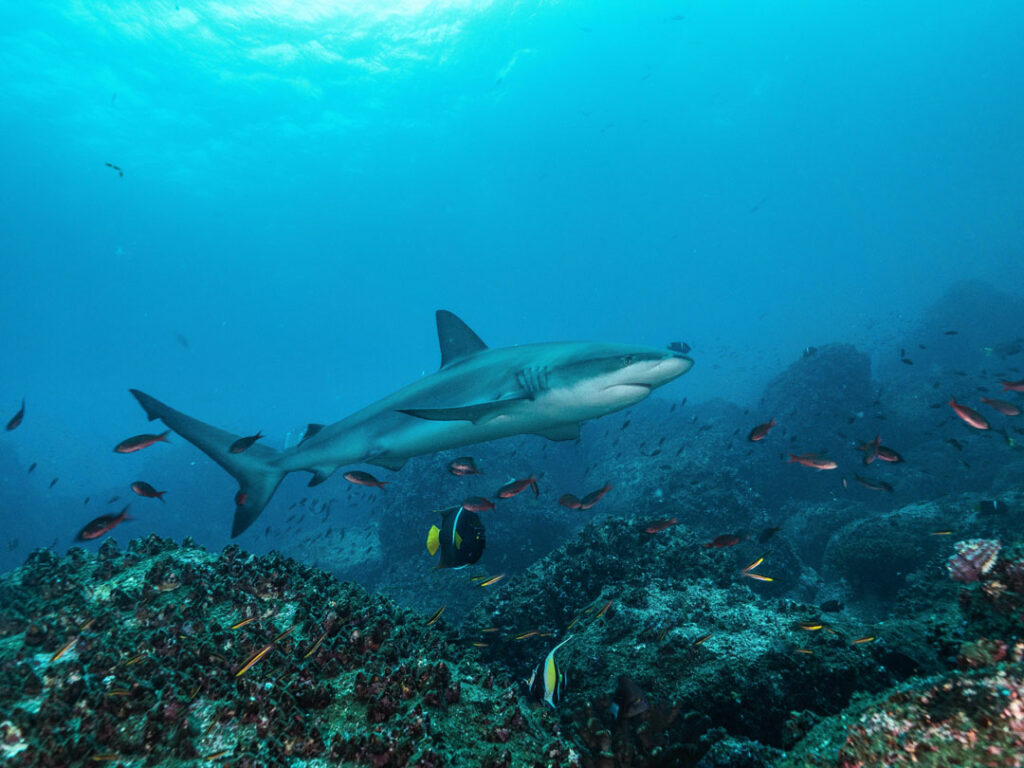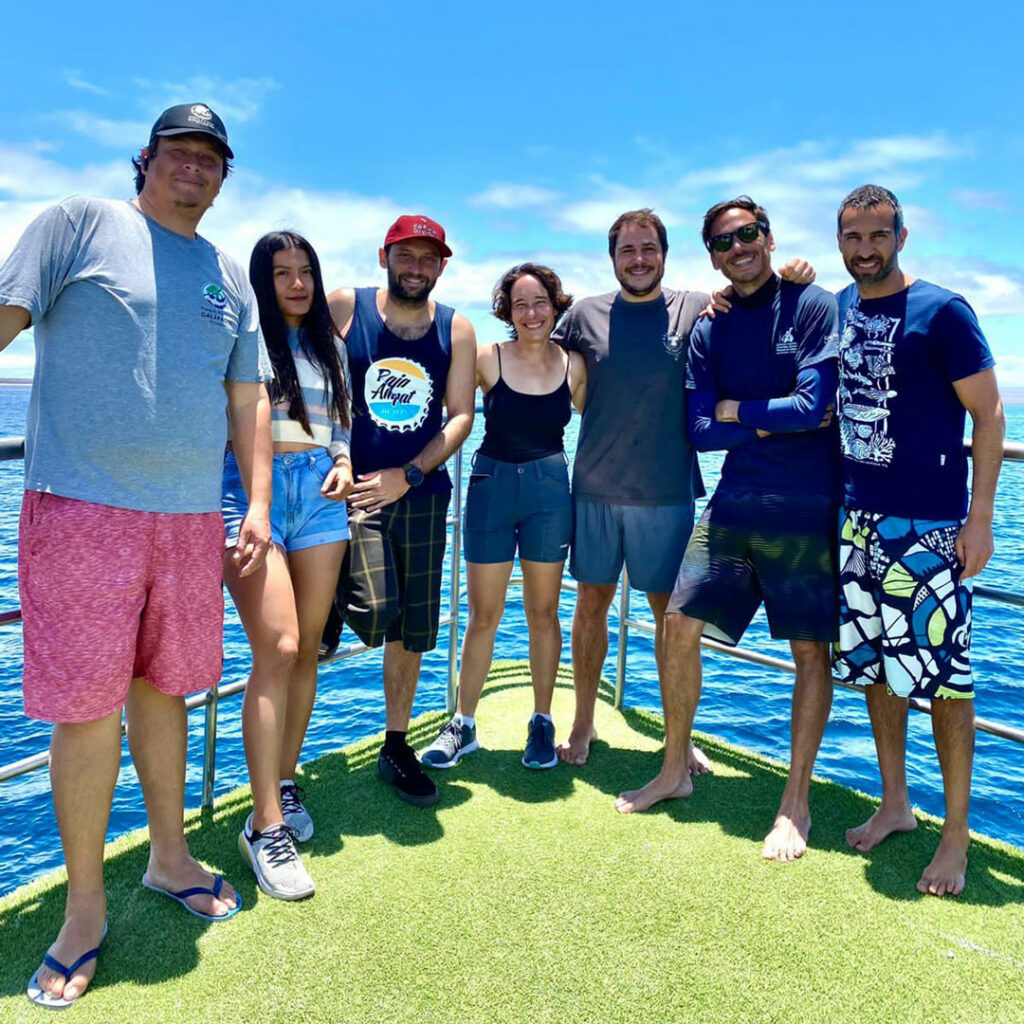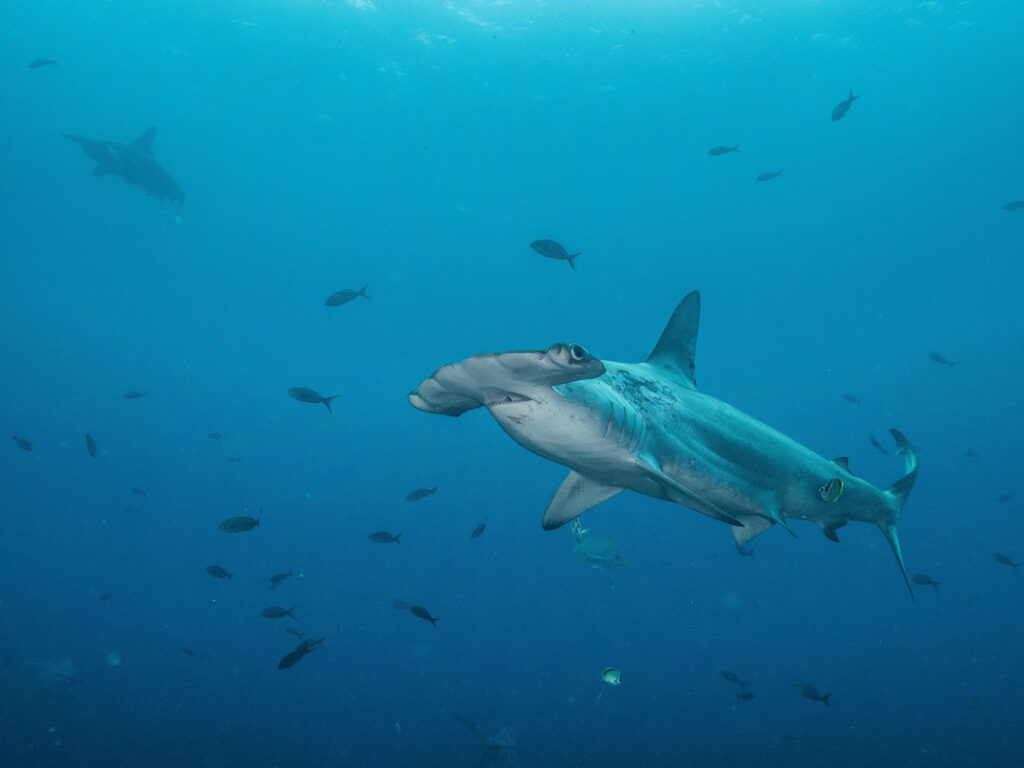Darwin and Wolf’s enchanted sharks
As a graduation present, my parents fulfilled one of my big dreams: A trip to the Galápagos! During my one-week stay in this paradise, I could appreciate and enjoy each site and the remarkable species that this beautiful place has. One afternoon, when I was swimming on the Tortuga Bay beach, I had my first encounter with a baby blacktip shark, which caught my attention and a feeling for this fascinating species was born. Thanks to this trip, I recognised how important it is to conserve and protect nature, which is why I decided with great emotion to study biology at the university.

Large female Galapagos shark patrolling the reef. Photo © Pelayo Salinas.
Throughout my university career, my focus was ecology and marine and terrestrial species conservation. During university, I loved travelling to the enchanted islands and was always looking for a way to return. I was a volunteer three times in the marine turtles and marine ecosystems project of the Galapagos National Park Directorate, which I enjoyed in every way.
However, my great dream has always been to participate in the Charles Darwin Research Station shark ecology project. I didn’t get tired of dreaming about it until I got it. I am grateful for this opportunity, which has been extremely rewarding, professionally and personally. Each of the activities carried out in the office, and the field has made me an organized and attentive person. To work as a team and be collaborative at all times and circumstances. Since not everything in life is rosy, there are always challenges at the beginning. At the beginning of the volunteering, identifying fish and sharks was a bit complex, with so much diversity to become familiar with. However, I can now quickly identify these species and their scientific names.

From left to right: Alberto Proaño (GNPD Park Ranger), me, Javier Mahuad (CCR diver), Ana Victoria Moya (CDF Shark Scientist), Dr. Pelayo Salinas (CDF shark project PI), Nikel Goñi (CDF Shark project volunteer), Dr Gabriel Vianna (CDF shark project Co-PI). Photo © Capitán Taipe | MY Danubio Azul.
Another of my dreams was to visit Darwin and Wolf, the furthest islands north of the archipelago, and enjoy the biodiversity that this place harbours. These islands are recognized worldwide as a biodiversity hotspot since they are home to different unique species of birds, such as red-footed and masked boobies, and a great abundance of marine species, but above all, sharks. At the end of September 2022, I could fulfil this dream. The shark project team undertook a scientific expedition to Darwin and Wolf islands to obtain data through the different applied methodologies such as BRUVS (remote video with bait) and DOVS (diver-operated cameras), taking biopsies for genetic studies and stable isotopes, and placing satellite tags to study the movements of hammerhead sharks. During this trip, I had the opportunity to interact with different marine species such as dolphins, fish, and sharks such as blacktip sharks, hammerhead sharks, Galapagos sharks, tiger sharks, and silky sharks. It really was a wonderful experience in this magical place.

Large female sacalloped hammerhead shark entering a reef fish cleaning station. Photo © Pelayo Salinas.
Previously, I had the opportunity to dive with sharks in the Galapagos; however, it was the first time that I was able to live the experience of swimming with dozens of sharks underwater. These moments will remain in my mind and heart forever!
Sharks are incredible and very important to the marine ecosystem. Thanks to them, the ocean remains healthy and balanced. It is very important to encourage the local population of the islands to conserve these great species and, in turn, continue to protect and care for the Galapagos Marine Reserve. I encourage young people from Galapagos and Ecuador to be part of this great project, and in this way, they can live this pleasant experience with sharks.
